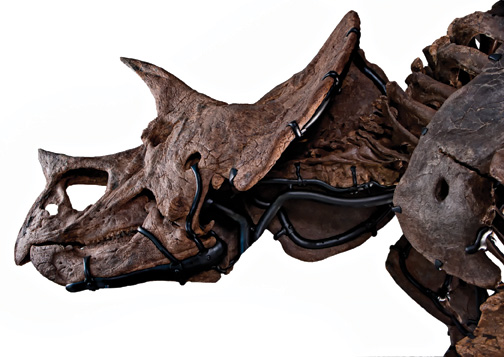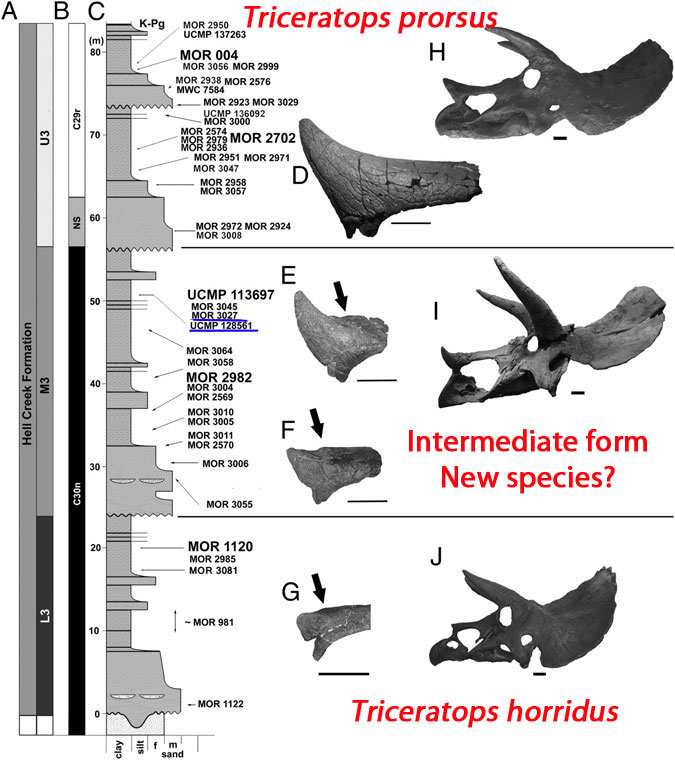Rare Triceratops Skeleton on Display
Triceratops might be one of the most recognisable of all the dinosaur genera, but we still have a lot to learn about this Late Cretaceous ornithischian and perennial favourite amongst dinosaur fans. Several musuems have a Triceratops skeleton on display. It might be a famous resident of the Hell Creek Formation, but Triceratops remains have also been reported from other North American geological formations too, all of which date from the very last faunal stage of the Cretaceous – the Maastrichtian.

Picture credit: Everything Dinosaur
The Natural History Museum range includes several ornithischian figures including Triceratops (whilst stocks last): London Natural History Museum Dinosaur Models.
Where Have Triceratops Fossils Been Reported From?
Team members at Everything Dinosaur have tried to compile a list of the geological formations, other than the famous Hell Creek Formation, from which Triceratops fossil material has been excavated.
Here is our list:
- Scollard Formation (south-western Alberta, Canada).
- Frenchman Formation (Saskatchewan, Canada).
- Evanston Formation (Wyoming, USA).
- Lance Formation (Wyoming, USA).
- Laramie Formation (Colorado, USA).
- Denver Formation (Colorado, USA).

Two Formally Recognised Species
Scientifically described and named back in 1889 (T. horridus – Marsh), several species have been assigned to the Triceratops genus over the years, many of which were based on highly fragmentary and poorly preserved fossil remains. Today, only two species are formally recognised, Triceratops horridus and the geologically younger Triceratops prorsus.
Intriguingly, fossils from the Hell Creek Formation suggest that there are probably other species of Triceratops awaiting formal recognition. Triceratops horridus is known from the lower portion of the Hell Creek Formation and T. prorsus from the upper portion, there is a distinct, transitional, intermediate form of Triceratops reported form the middle portion of this geological formation. The fossils associated with these strata probably represent an as yet, unnamed and undescribed new species of “three-horned face”.

For an article that looks at the evolutionary relationship between the two, formally recognised species of Triceratops: How Triceratops Got its Horns and Beak.
To read Everything Dinosaur’s blog post from 2018, that examines the ceratopsian family tree and looks at the taxonomic relationship between the Triceratops genus and other Late Cretaceous horned dinosaurs: A Horned Dinosaur Family Tree.

